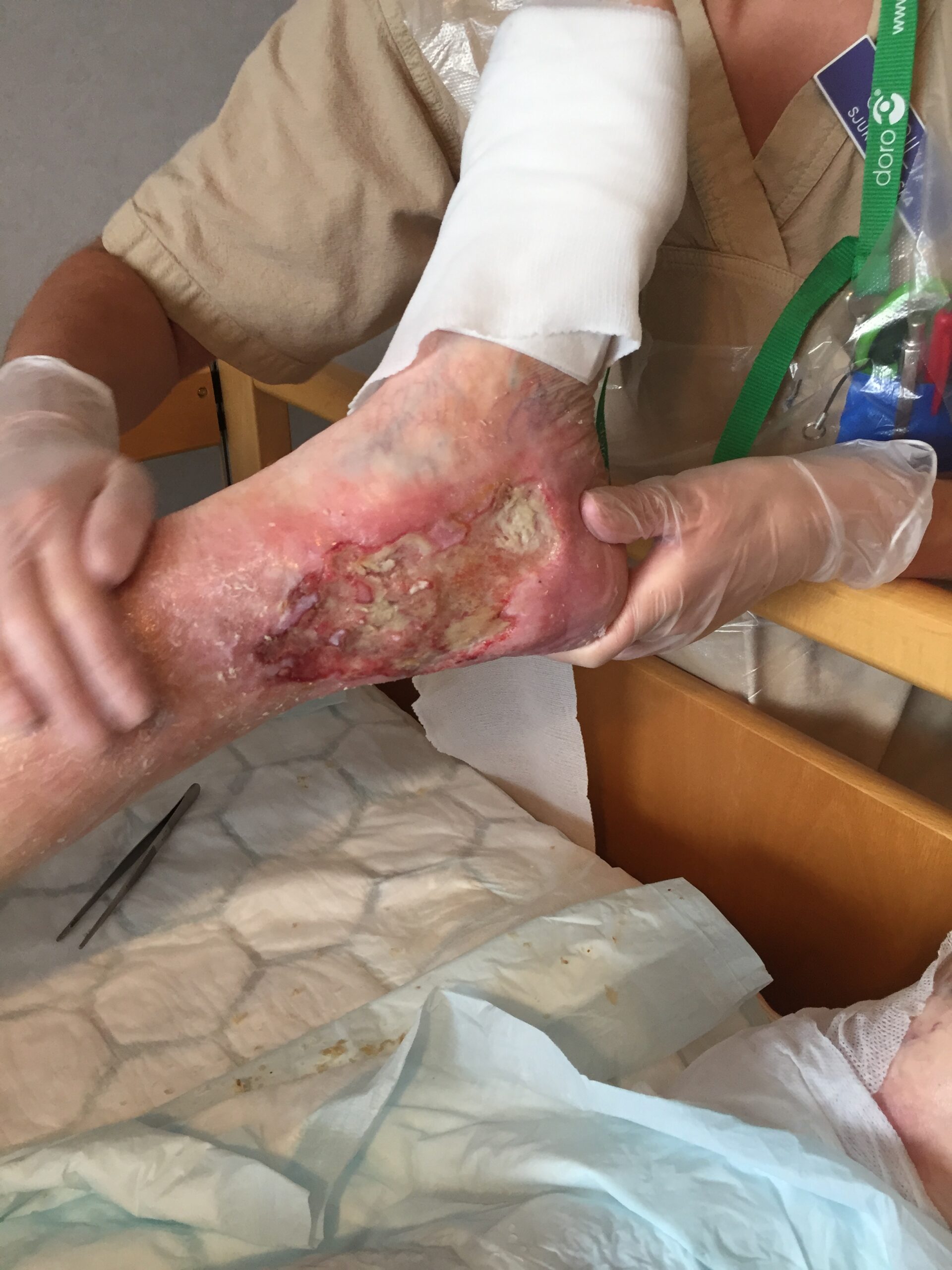
Mixed aetiology leg ulcers are chronic wounds caused by a combination of venous insufficiency and arterial disease. This dual condition significantly complicates wound healing. On one side, venous hypertension leads toWhat is an Arterial Leg Ulcer?, article on absorbest.co.uk oedema and excess wound exudate. On the other side, arterial insufficiency restrictsArterial leg ulcer treatment, article on absorbest.co.uk oxygen and nutrient supply to the tissues, impeding the body’s natural healing process.
It’s estimatedOptimal treatment strategy for mixed arteriovenous leg ulceration - Journal of Vascular Societies that ulcers with mixed aetiology make up approximately 15–25% of all leg ulcers in the UK. Accurate assessment, including measuring the Ankle-Brachial Pressure Index (ABPI), is essentialUnlocking ABPI: effectively assessing ABPI and the implementation of automated ABPI for lower-limb wounds in community nursing, Wounds UK, Vol. 21, Issue 01 for identifying arterial involvement and determining safe levels of compression therapy
Managing moisture balance is often one of the most significant challenges. Excess exudate risks maceration of the surrounding skin and increases the likelihood of infection. Meanwhile, insufficient moisture can dry out the wound bed, hindering healing.
Choosing the appropriate dressing, often a superabsorbent one, alongside suitable compression therapy, plays a vital role in promoting healing.
Accurate diagnosis is crucial, as treatment involves balancing compression for venous issues without aggravating poor arterial circulation. Personalised, holistic care is essentialMixed Aetology Leg Ulcer, article on absorbest.co.uk for achieving successful outcomes.
An 87-year-old woman, living with multiple illnesses and both arterial and venous insufficiency, faced a persistent wound that remained unhealed for 240 days. In this case, the ulcer was stuck in the inflammatory stage, producing large amounts of exudate that leaked onto clothing, bandages, and bedding. Delicate peri-wound skin, maceration, and ongoing inflammation created a cycle that was difficult to break.
![]()
The initial step involved thorough cleaning and debridement to remove yellow fibrin and biofilm, making the wound bed more receptive to healing. Local anaesthesia was administered to minimise discomfort during the procedure.
A superabsorbent dressing (DryMax Super) was chosen due to its capacity to:
Given the patient’s arterial condition, only gentle compression therapy was used, based on ABPI (Ankle-Brachial Pressure Index) assessment and clinical judgement.
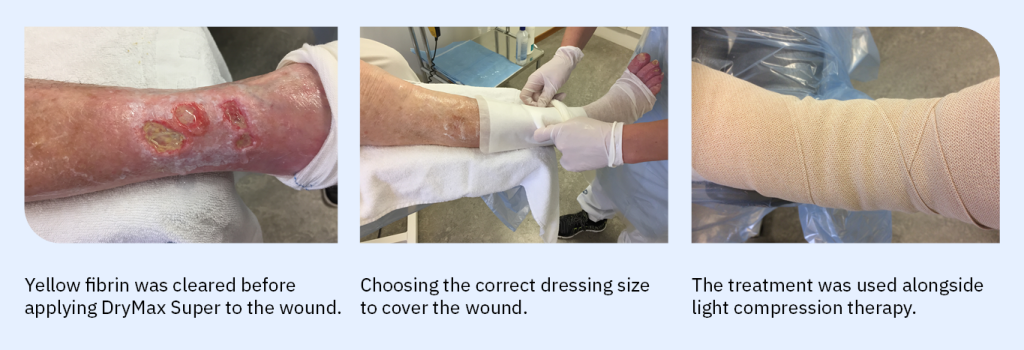
![]()
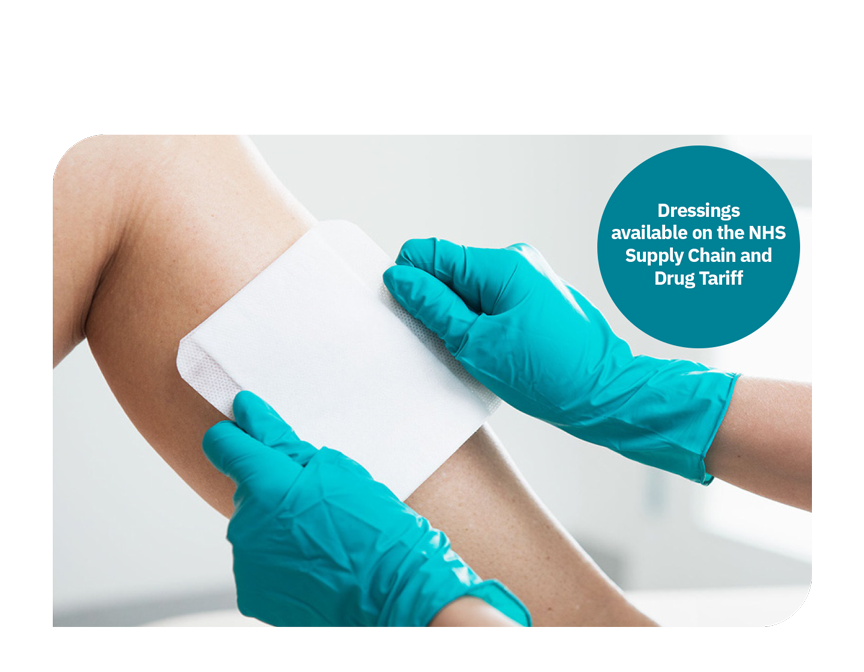
Please provide your details, and we will send free samples to your workplace. Please note, we can only send samples to healthcare professionals.
The combination of effective exudate management and controlled compression resulted in several beneficial changes:
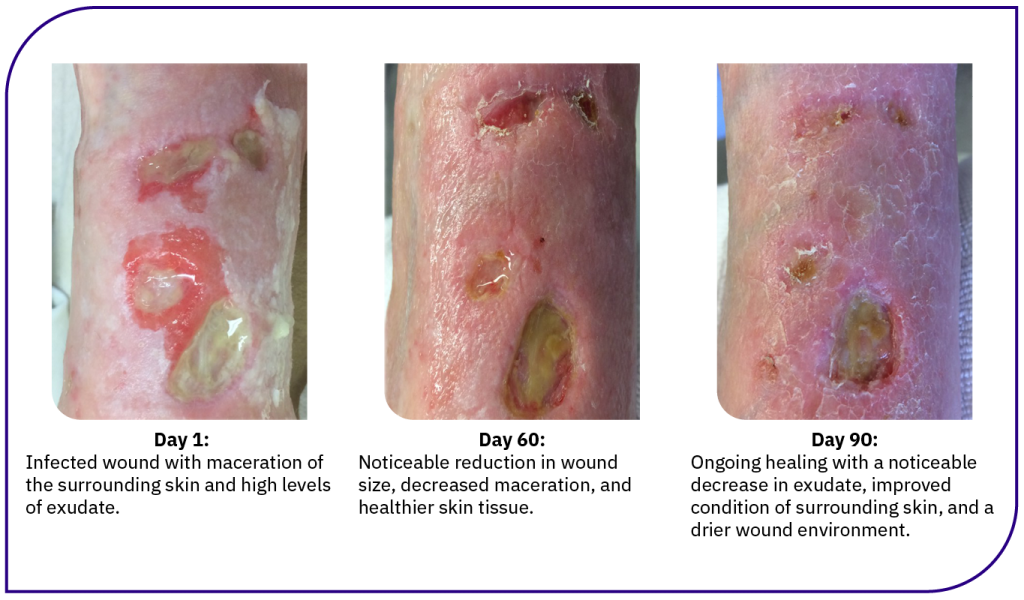

The patient was able to resume a more active daily routine, with fewer dressing changes and no longer experiencing leaking wounds or damaged clothing.
She also reported that the dressing was pain-free, both when in place and during changes.
The superabsorbent dressing proved reliable, cost-effective, and easy to handle. No emergency dressing changes were needed. The ability to stack dressings allowed flexibility during fluctuating exudate levels.
Overall, the product was recommended for inclusion in the local wound treatment protocol, outperforming previous dressings used for similar wounds.
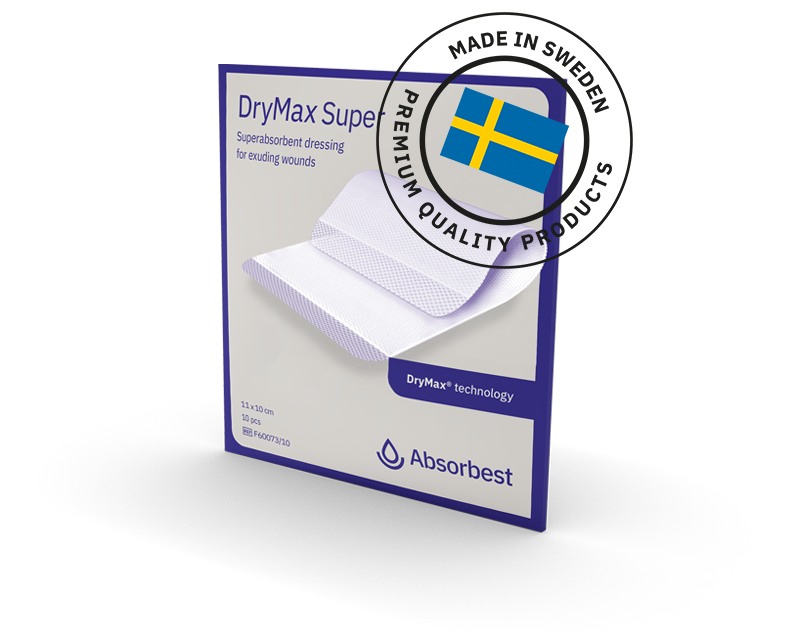
Experience the difference and compare the outcome with our superabsorbent dressing. Designed to create a simple wound healing process and optimal healing environments to support clinicians giving quality care.
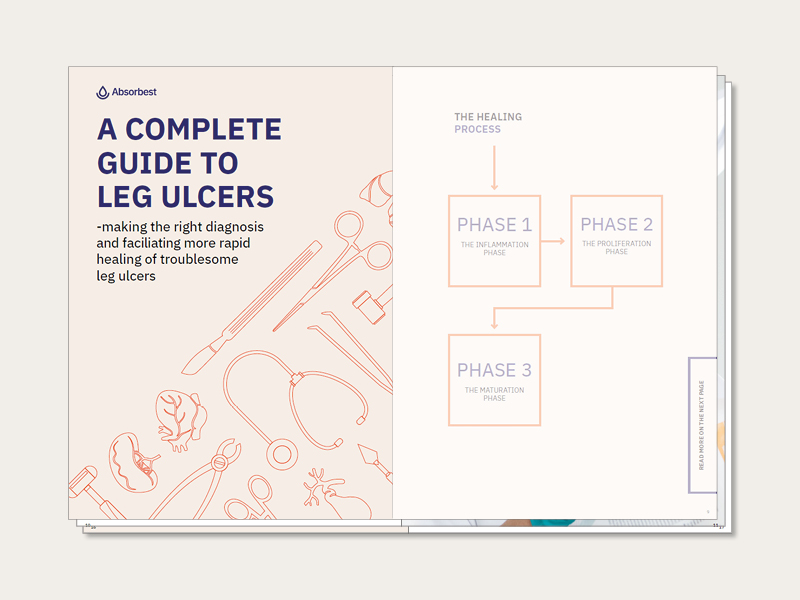
What are the characteristics of different leg ulcers, and how can we promote the healing of problematic ulcers? Treatment measures, phases of healing, cleaning, and appropriate dressings. Our complete guide to leg ulcers focuses primarily on venous ulcers, from cause and origin to the healing process and aftercare.
“Leg ulcer treatment“, absorbest.co.uk
“Arterial leg ulcer treatment“, on absorbest.co.uk
“Optimal treatment strategy for mixed arteriovenous leg ulceration: a systematic review protocol“, Journal of Vascular Societys
“Unlocking ABPI: effectively assessing ABPI and the implementation of automated ABPI for lower-limb wounds in community nursing“, Wounds UK, Vol. 21, Issue 01